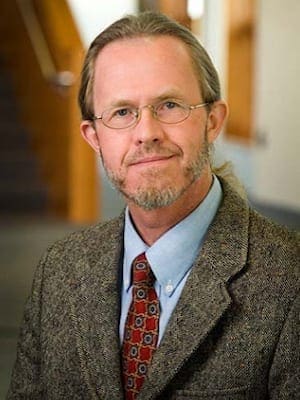Clergy historically were known as “Doctors of the Church.” Physicians more recently have been called by numerous cultural critics the new “high priests” of our society. Both professions attend to a community cohort referred to simply as “patients”–the sufferers.
A committee of clergy and clinicians in Kansas City have noted this situation as a problem in need of rectification. Representatives from two seminaries and several faith communities collaborated with an Adventist hospital’s Institute for Spirituality in Health to plan a fall conference titled “Bridging Faith and Medicine: A Physician/Clergy Dialogue.” Featured plenary speakers (Christina Puchalski, M.D. and the Rev. Fred Craddock, Ph.D.) drew upon the ranks of the two professions specifically targeted for inclusion in a day of collegial “dialogue”.
Approximately 300 participants showed up to listen and talk to one another. Relatively few were physicians, less than 10 percent. While disappointing, this was a predictable and seemingly irresolvable consequence of contrasting professional realities relative to income. Most clergy schedule their own time, with salaried income unaffected by a day away from the church office for continuing education events. Physicians, however, are increasingly employees or subcontractors in relationships structured such that a day away, if permitted at all, would have substantial negative financial repercussions. Also, many continuing-medical-education units are gained by attendance at weekend conferences underwritten by pharmaceutical companies and held in luxurious settings.
The planning committee might have expected a higher M.Div. and lower M.D. turnout merely on account of the professional turf, a seminary, chosen as site of the conference. A neutral setting, such as a hotel, might have been better for attracting physicians but would have been a costly deterrent to clergy.
Although professional income differentials played a factor even in structuring a physician/clergy dialogue, this issue was not addressed in Kansas City at the “Bridging” conference. Topics of mutual interest and relevance were found besides that rather sticky socio-economic one. Plenary addresses by both speakers dealt with the renewed interest among healers of all stripes in spirituality and holistic approaches to healing. Breakout sessions addressed end-of-life issues, pain-management, palliative care, and proselytization of vulnerable patients by relatively powerful professionals, whether clergy or clinician. I shared leadership with two physicians in a module we titled “Sharing the Turf.”
Despite the lopsided ratio of ministers to physicians, attendee evaluations came back highly positive and enthusiastic from members of both guilds. Interest has been generated already for similar conferences elsewhere, and relationships were initiated at this one that bode well for future partnering in places where professionals practice and patients suffer.
In anticipation of the October event, a smaller group of clergy and physicians gathered monthly for nearly a year in a pilot project. Years earlier, this had been envisioned by Disciples minister Bob Hill. When the idea was raised again in committee–as an experiment in dialogical collaboration on a micro scale, in comparison with the larger conference being planned–I agreed to convene such a group, and enlisted Rev. Hill’s participation along with several other members of the planning committee.
The dialogue group that formed around this concept ultimately consisted of five physicians (a neurologist, a pulmonologist, a cardio-thoracic surgeon, an emergency/trauma physician, and a psychiatrist) and four clergy including myself and Rev. Hill, a Presbyterian clergywoman, and ISH director Steve Jeffers.
Meetings have occurred exclusively on “turf” more familiar to physicians and at a time of day most conducive to their schedule. We gather monthly for breakfast from 7-8 a.m. in a conference room provided by the host hospital, which generously donates the food as well.
While I have served as convener, leadership is shared on a rotating basis. Most sessions, however, do not follow any agenda that may have been chosen. From the start, it became clear that each of us brings to the table much experiential material for sharing and discussion. The covenantal basis of trust and confidentiality enables presentation, for collegial feedback and support, of difficult case situations from practice and ministry.
At the “Bridging” conference, a summary report was given on the small group pilot project. I noted one unexpected result that also ultimately contrasted with professional attendance ratios at the larger gathering. I had hypothesized during the conceptualization stage of the experiment that clergy participants would be easily recruited for a bi-professional dialogue group, and that physicians would be harder to find and keep.
In fact, just the opposite occurred. Physician recruits were easy and plentiful (20 others already have expressed interest in joining new groups), and their group commitment has been exhibited in regular and prompt monthly attendance. One physician has commuted from home in order to attend even on his day off or after an all-night on-call shift.
Clergy members of the dialogue group were more difficult to recruit, however; and while we M.Div.-types who eventually signed on have been faithful to our commitment, overall clergy participation has been somewhat less stellar than that of our M.D. counterparts. This may be attributed in part to “turf” and time issues for potential clergy participants; but it suggests also that physicians especially may be more open to such group experiences than any of us had imagined.
Large-scale conferences inevitably are costly no matter how they are structured or where they are convened. The small group concept, on the other hand, is replicable at little expense in virtually any community. What is hoped for in Kansas City is a multiplication of “M.D./M.Div. Dialogue Groups” by interested physicians and clergy who would gather in medical centers throughout the metropolitan area and in community hospitals elsewhere.
Collegial benefits are likely for those professionals who covenant together for conversation and support; yet ultimately the benefits of collaborative relationships accrue especially to those whom both professions aim to serve, the patients.
Tarris Rosell is associate professor of pastoral care and practice of ministry at Central Baptist Theological Seminary.

